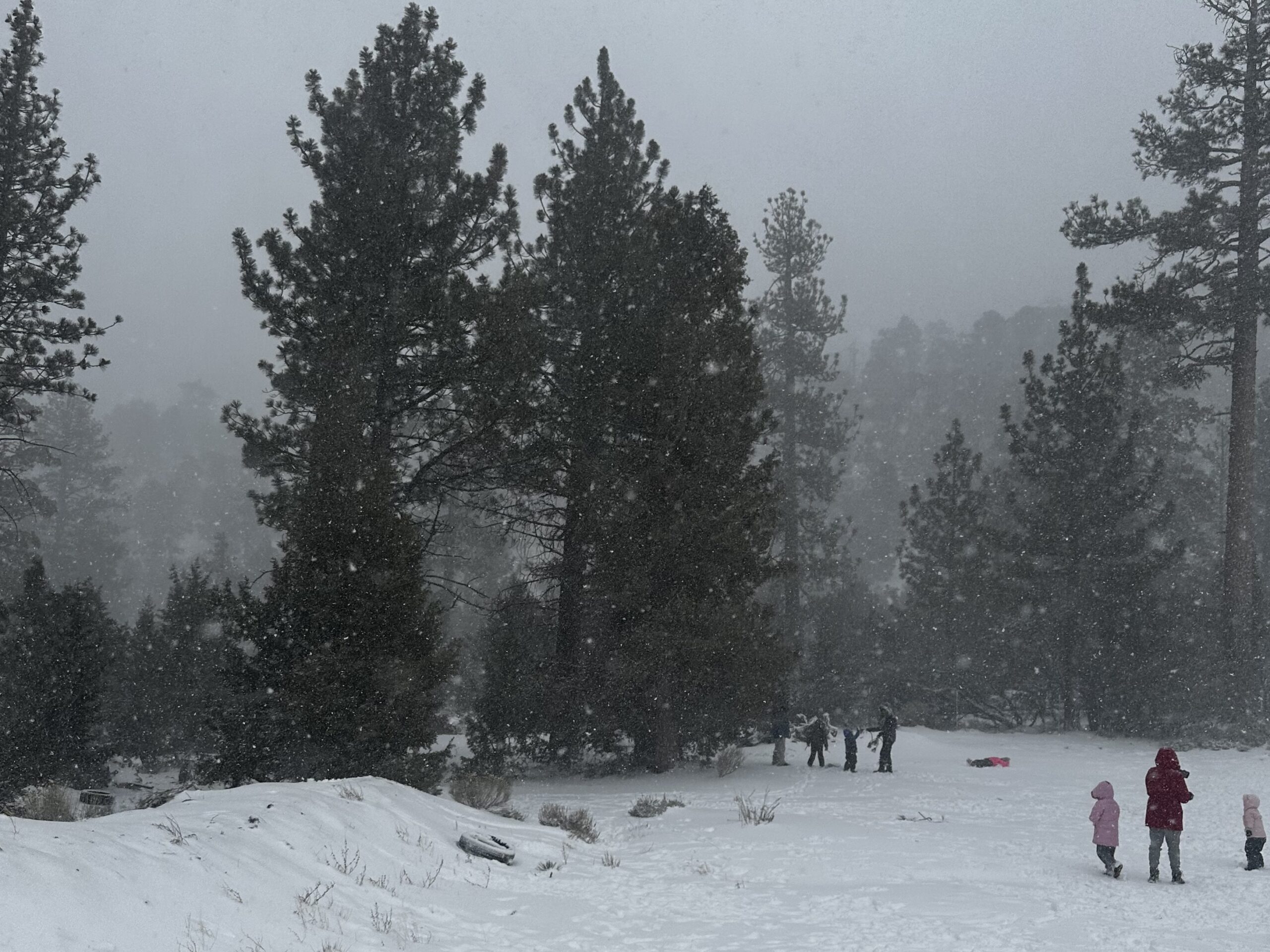Snow hitting the ground in Big Bear California. Photo by Aliyah Brown
By Aliyah Brown Staff Reporter
Although snowfall in California is not rare to see in the winter, it is also not a typical occurrence, especially in the state’s lower altitudes and coastal locations like Los Angeles and San Francisco. However, recently Southern California has seen record snowfall and cold temperatures.
The change in climate for the sunny state has a significant impact on the state’s landscape and on the lives of millions of residents. For instance, the mountains that are located in the background of the famous Hollywood sign were recently covered with snow, something that has not been seen since 2007.
The entrances to Yosemite National Park were blocked, mountain roads were blanketed with black ice, and the Napa Valley grapes were dusted with snow powder. On the beach near Santa Cruz, snow and sand met.
Warnings for winter storms were issued for the Greater Lake Tahoe area. The mayor of Big Bear Lake also recommended that tourists avoid visiting the area until the town’s snow emergency has passed.
While the snowfall is worrisome, it does have some benefits.
“There is absolutely no reason to worry about the snow in Southern California or Northern California. Our snowpack is essential to all of California, as the snow melts it provides most of the freshwater required for various aspects,” said Cheyenne Cummings, a professor of earth sciences at California State University, Dominguez Hills.
The provision of fresh water to urban areas, agricultural lands and natural ecosystems in California is primarily dependent on snowmelt. The snowfall in the Sierra Nevada Mountains acts as a natural reservoir by slowly releasing water into streams and rivers over the spring and summer months. This process continues across the mountain range and helps guarantee that there will be sufficient water supply throughout the dry summer months, which is often when demand is at its peak.
According to the National Snow and Ice Data Center, because of the snow’s impact on energy and moisture budgets, it is an essential climate change variable. Snow contributes to Earth’s energy balance by reflecting solar energy into space, helping to cool the planet. Snow has an extremely high albedo, a process that determines how much sunlight it reflects into the atmosphere, reflecting 80 to 90 percent of the incoming sunlight. As the snow melts, it provides more moisture to the soil, which helps preserve crops and other plant life from the very freezing temperatures that could damage them.
Although snow has certain positive aspects, it also has some potentially negative aspects.
Roads and sidewalks can become treacherous due to snow and ice. It increases the likelihood of people being injured in accidents and raises the mortality rates. The arrival of snow and ice may also result in delays and cancellations of transportation services such as airplanes, trains, and buses.
The damage that may be caused by heavy snowfall and ice, including to buildings, roofs, and automobiles, can be rather expensive to repair. An increased likelihood of hypothermia and frostbite may result from prolonged exposure to low temperatures and damp circumstances.
“The future climate for Southern California is that of a dryer (climate). We can expect to see each year continue to break temperature highs more frequently, (to where) there will be considerably more days in summer breaking 120 degrees. We can expect that our storms will be stronger with flash flooding from rains being more common. Summer being hotter will lead to vegetation being dryer and more wildfires,” Cummings said.

